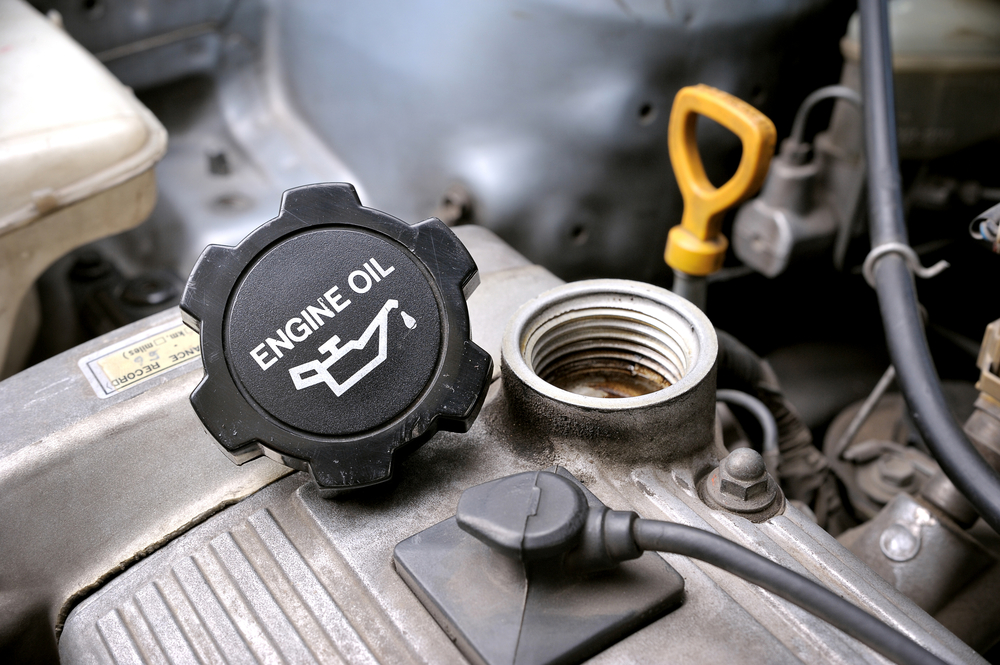A vital part of regular car maintenance, changing your oil is integral in keeping your car running smoothly. That being said, it can be hard to remember exactly when it is time to change your car’s oil, especially if it’s been several months since your last oil change or tune up.
To help you out in determining if your car is ready for a tune-up, we’ve gathered a list of the most important warning signs that may indicate your car is in need of an oil change.
We’ve also answered some of your questions concerning the timing of oil changes and how to DIY your own oil change at home.
Why Oil Changes Are Important
You often hear about how important oil changes are, but you may still be wondering why exactly this maintenance procedure is so integral to the upkeep of your car. Simply put, oil changes are so important because they keep your engine clean, allowing it to run more smoothly and efficiently.
When you don’t change your oil for an extended period, it is likely to pick up a fair amount of sludge and dirt from the engine. This contributes to a dirty engine that doesn’t run as smoothly as it would if it had new, clean oil added into it regularly.
Another downside of leaving it too long between oil changes is that fact that your engine’s life span will decrease – frequent oil changes are the key to extending your car’s life and keeping the engine from overheating or otherwise breaking down.
How Long Can You Wait Between Oil Changes?
There are a lot of mixed messages out there when it comes to identifying exactly how long you can wait between oil changes. Many experts will recommend anything between every 3,000 and 20,000 miles as the indicator you need your oil changed. However, this time range is very variable and depends on the wear you put your car through and the specific type of car you have.
Older cars or cars that are often driven over rough terrain are more likely to need frequent oil changes that happened between every 3,000 and 5,000 miles. Newer cars and cars that are driven exclusively on flat ground and pavement will probably need oil changes every 7,500 to 15,000 miles. Additionally, the type of oil you’re using is also important. For example, full-synthetic oil lasts longer than traditional oil.
You can check your manufacturers recommendations for the length to wait between oil changes, but just keep in mind if you can’t remember the last time you had your oil changed, it’s probably time for an oil change.
Top Signs You Need an Oil Change

If you don’t remember the last time you had an oil change, but you suspect your car is due for one, keep an eye out for these warning signs that you need to get an oil change as soon as possible.
Excessive Mileage
A great indicator in determining if your oil needs to be changed, extremely high mileage is a definite sign your oil has seen better days. If you have put several thousand miles on your vehicle in the past few months, it’s probably time to get your oil changed. Similarly, if your car has very high mileage and you don’t remember the last time you changed your oil, you should probably get an oil change to be on the safe side.
The Warning Lights Are On
One of the easiest signs to identify, the presence of warning lights in your vehicle can indicate the need for an oil change. These indicator lights are designed to sense the any change in the condition of your car’s systems or engine, alerting you to the possibility of an internal issue with the light on your dashboard.
The light that most commonly appears due to low or dirty oil is the check engine light, which looks similar to a small engine and will be illuminated in a yellow, red, or amber color. If you want to double check on the meaning of a check engine light, you can purchase an OBD2 scanner and read the codes, allowing you to properly diagnose the issue.
There’s a Burnt Oil Smell
Burn oil smells inside your car can indicate a potential oil leak. This type of smell means that oil is dripping onto the hot engine parts of your car and causing the fumes; you should consult a professional if you start to experience this symptom. It is likely you will need a repair to fix the leak and an oil change to replenish the oil that was lost.
The Oil Appears Dirty or the Level Is Low
Another easy way to determine if it’s time to change your oil is to check the oil levels. Prop up the hood of your car and pull out the oil dipstick. If the oil is very dark brown, black, or otherwise gritty and dirty looking, it is time to change your oil; fresh, clean oil should be a light amber color.
Additionally, if the oil level is much lower than the indicated fill amount on the dipstick, you definitely need a top up of oil, and probably a full oil change to go along with it. If you drive your car with low engine oil for too long, it is likely that the engine will seize up; it’s better to play it safe and just get the oil changed and topped up completely.
You Get Bad Gas Mileage
If you wait too long between oil changes, it is likely that the oil in your engine will get dirty and thicken slightly. This causes it to be less efficiently at lubricating the engine, causing the engine to work harder and burn more fuel. A sudden drop in fuel efficiency could mean that you are long overdue for an oil change.
Your Car Is Overheating
Part of oil’s function in your car is to keep the engine lubricated and all working parts moving smoothly. If the oil is too dirty or there isn’t enough oil in the car, then your engine will start to overheat, causing a range of problems that include stalling, breaking down, and other costly damages that can even leave your car unusable.
You Start to Hear Tapping Noises
A sudden onset of tapping or ticking noises in your car could be caused by dirty engine oil. As old oil doesn’t do the best job of keep your car’s engine running smoothly, the metal parts of the engine begin to rub onto each other, causing these ticking, tapping, or rattling noises, and sometimes even causing a slight vibration sensation in your car. Noises or rattling sensations like these call for a consultation with a professional and an oil change as soon as possible.
You’re Seeing Colored Exhaust Smoke
Translucent vapors and white colored smoke on a cold day are normal to see coming from your tailpipe. When the color of this exhaust smoke turns blue or grey, however, you may be experiencing an oil leak. If this smoke is combined with any of the other signs we listed, then you definitely need to get your car to a mechanic and the oil changed as soon as possible to prevent other costly repairs.
Do You Need a Professional to Change the Oil?
While it can be helpful to take your car to a professional for helping changing the oil, this isn’t always a necessity. It is possible to change the oil in your car by yourself if you have a few essential tools, a little bit of car knowledge, and a spare afternoon.
That being said, if you are experiencing any of the other more worrying symptoms, such as burnt oil smells, car tapping noises, or colored exhaust smoke, you may want to take your car to a mechanic to properly diagnose the problem and change your oil, just in case there is something more causing these car issues for you.
On average an oil change at a local mechanic will cost you anything from 20 to 100 dollars, with synthetic oils and car dealerships being more expensive overall; this price includes labor and the cost of the oil.
If you change the oil yourself, you are likely to spend 25 to 40 dollars on the oil, plus any other small supplies you need to purchase; in this case, the labor is free because you are the one changing the oil.
How to Change Your Car’s Oil by Yourself

Changing your own oil can be simple once you get the hang of the basic steps; these steps include preparing the car, draining the oil, replacing the oil filter, and then adding new oil in. You will need to purchase new engine oil, an oil filter, oil filter remover, and new drain plug washer as part of these steps. You should also make sure you have a wrench on hand to open up the oil drain plug, and gloves to stop your hands from getting stained.
For a complete step by step guide on this process, check out this article that breaks down the DIY oil change process into an easy-to-read guide.
Car Maintenance for a Smoother Drive
Changing your oil is an important step in car ownership and something that shouldn’t be overlooked. Leaving it too long between oil changes can have disastrous effects on your car’s engine functions, and may result in some costly damages if neglected long enough.
If you are experiencing any of these signs of needing an oil change, or you simply don’t even remember the last time your car had its oil replaced, you should make an effort to head to your nearest mechanic for an oil change or break out your DIY tools in order to give your car some much-needed maintenance.


